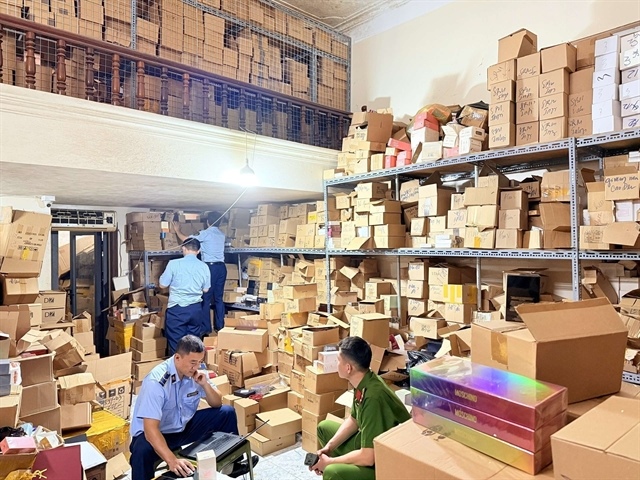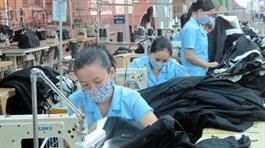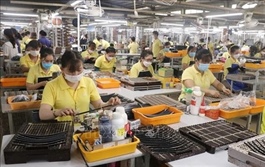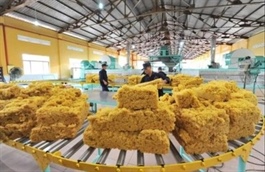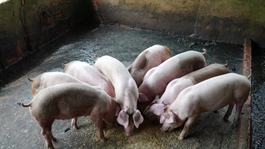Master plan as a "lever" for Hanoi's craft village development
Master plan as a "lever" for Hanoi's craft village development
It is imperative to create a master plan with a vision for 2050 for the growth of Hanoi's handicraft villages between 2024 and 2030.
Hanoi is known as the "land of a hundred trades", but there are many obstacles preventing the development of craft villages commensurate with their potential and advantages.
The city is developing a master plan for the development of its handicraft villages for the period 2024-2030, with a vision for 2050 to provide the driving force for their sustainable development. Local experts recommended that detailed discussions and specification of issues such as methods, policies and support resources are necessary for the successful delivery of the plan.
Inefficient models & environmental concerns

Many foreigners are interested in Hanoi's handicrafts. Photo: Trong Tung/ The Hanoi Times |
With nearly 1,350 handicraft villages, of which 322 have been designated as traditional handicraft villages, Hanoi is home to the largest number of handicraft villages in the country, according to the Ministry of Agriculture and Rural Development.
The city's artisan villages practice 47 of the 52 traditional trades found nationwide, contributing to Hanoi's overall economic development, creating jobs and livelihoods for local people, and promoting tourism.
Many craft villages also lack integrated resource protection and conservation measures and have inadequate business models, according to the agency.
Deputy Head of Thach That District’s Economic Division, Khuat Van Nham, said that while 50 of the district's 59 villages practice traditional crafts, some of which are nationally renowned, such as Phung Xa metalwork, Huu Bang woodwork and sewing, Thach Xa che lam (sticky rice flour cakes), and Chang Son, Canh Nau and Di Nau woodwork, their production is generally small-scale and at the household level.
Many craft villages also lack integrated resource protection and conservation measures and have inadequate business models, according to the agency.
Meanwhile, according to Nguyen Cuong Hung, Deputy Head of Hoang Mai District’s Economic Division, although the traditional craft of tofu-making in Mai Dong Ward has a long history and its products are popular with consumers, the artisans face challenges as the ward becomes increasingly urbanized, with household producers operating in cramped residential areas, causing environmental pollution, he added.
Master plan as a "lever" for craft village development
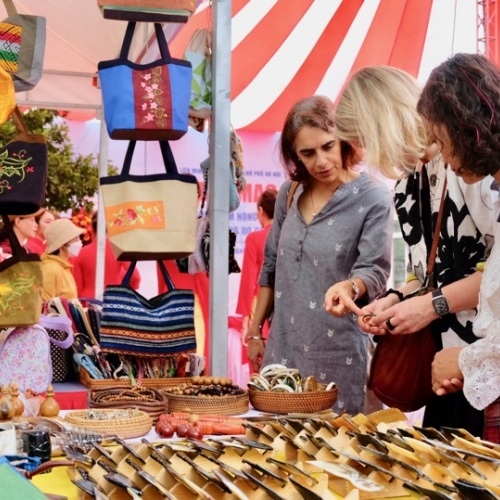
Hand-woven bamboo products for export at Phu Tuc Craft Village. Photo: Tran Viet/ The Hanoi Times |
In recent years, the city has supported craft villages, but this has been fragmented and not part of a comprehensive long-term strategy. Therefore, it is crucial to develop a master plan for the development of artisan villages in Hanoi for the period 2024-2030, with a vision for 2050.
The draft plan should outline the city's key objectives, including preserving and promoting the value of craft villages and celebrating craftspeople; preserving and developing traditional trades and craft villages; developing new businesses; fostering leading craft villages in line with local strengths and potential; and enhancing support services and the role of relevant stakeholders.
The city has outlined strategies for the sustainable growth of craft villages, with a focus on building up the skills of regulators in the maintenance and development of craft villages, improving support mechanisms and policies, creating production-ready raw material zones, providing training and encouraging the use of science and technology in production.
To finalize the master plan, the Hanoi Department of Agriculture and Rural Development organized a workshop to gather input from academics, departments, districts and towns.
According to Nguyen Cuong Hung, Deputy Head of Hoang Mai District Economic Division, the district is planning to relocate local tofu producers away from residential areas in order to reduce pollution and create space for expansion. However, this move is hampered by dike protection regulations. He hopes the comprehensive master plan will solve this challenge.
According to Khuat Van Nham, Deputy Head of Thach That District Economic Division, as this is a major master plan covering craft villages across the city, it needs to take into account the unique characteristics of each craft group to provide appropriate support mechanisms.
As an illustration, he cited traditional handicrafts in Thach That, such as Chang Son fans and Thach Xa bamboo dragonflies, which are primarily handmade by skilled artisans and do not necessarily require the application of science and technology.
Pham Diem Hao, Deputy Head of the Planning and Tourism Resource Development Division of the Hanoi Department of Tourism, believes that craft villages are valuable resources for tourism development.
"Therefore, it is important to promote their value, spread awareness and honor them so that people can take pride in and cherish these crafts and prevent their gradual disappearance," she said.
Nguyen Dinh Hoa, Deputy Director of the Hanoi Department of Agriculture and Rural Development, said the master plan is currently being finalized to be submitted to the Hanoi People's Committee for approval and implementation.
He emphasized that the master plan is seen as a "lever" that will allow artisan villages to grow and flourish in a sustainable way, while preserving their customs and cultural heritage, raising workers' incomes and driving the socio-economic progress of Hanoi.






